NORTH WALES COAST RAILWAY:NOTICE BOARD
Rheilffordd arfordir gogledd Cymru: Hysbysfwrdd
21 April 2020

Forthcoming events
(see also our Calendar page for venues)
Note: we have removed all entries up to the end of May as the events are cancelled.
June 2020
Saturday 27 June Steam at Chester The Cheshireman (Railway Touring Company). 60163 London Euston - Chester and return.
July 2020
Sunday 19 July Steam on the Coast North Wales Coast Express (Railway Touring Company) LIverpool - Manchester - Holyhead (15:05 - 17:40).
Tuesday 21 July Steam on the Coast The Welsh Mountaineer (Railway Touring Company) Preston - Blaenau Ffestiniog and return
August 2020
September 2020
Saturday 5 September Steam at Chester 'The Cheshireman' (Railway Touring Company). Norwich to Chester. Loco 6233 for part of the journey.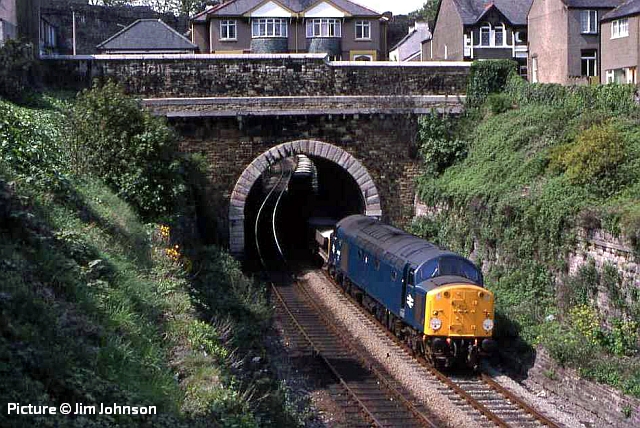
40 120 at Conwy with ballast from Penmaenmawr, 10 May 1978. Picture by Jim Johnson.
Class 47s ... and other 80s scenes - by Tim Rogers
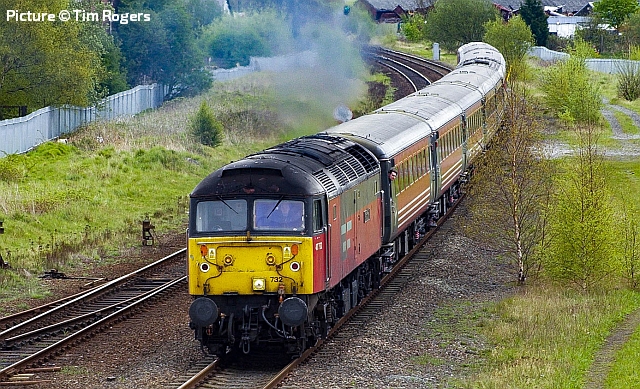
This month in 2002, Class 47s reigned on the Crewe - Holyhead leg Virgin Trains' London services. On 20 April, hired-in 47 732 Restormel passed Mold Junction on 1D87 07:20 Euston to Holyhead.
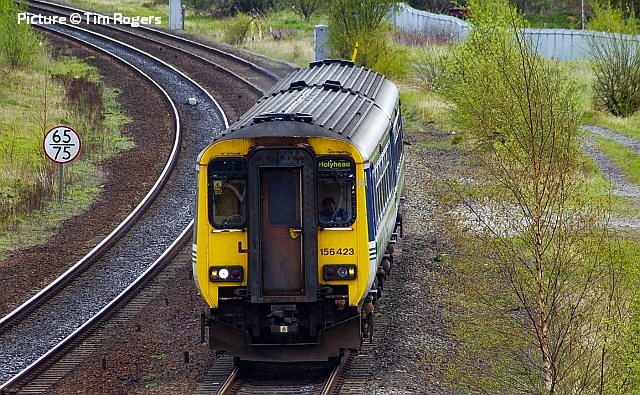
Before the transfer of the North Wales line to the Wales and Borders franchise, First North Western Class 156 units in their 'green stripe Regional Railways' livery could be seen on the Coast line. This is 156 423 passing Mold Junction on 20 April 2002 with 10:02 Manchester Piccadilly to Holyhead. Today it is still with Northern and wears their latest livery.
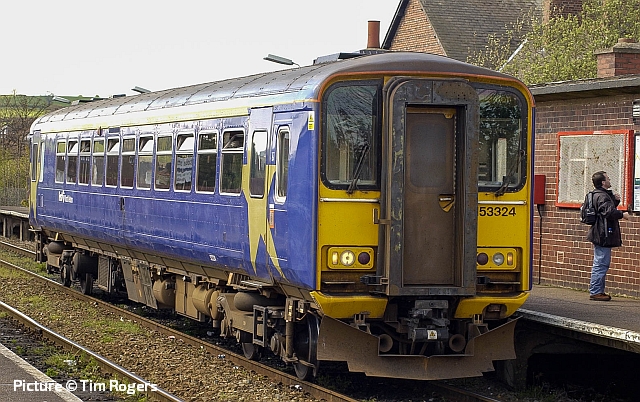
First North Western also ran the Wrexham - Bidston line: 153 324 calls at Shotton High Level on 16 April 2002. Like all 153's this was originally one coach of a two-car Class 155 unit.
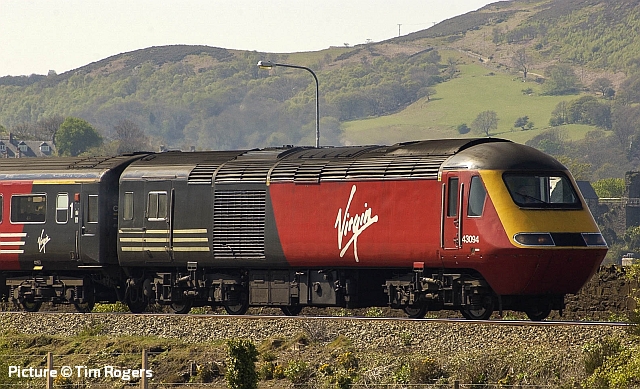
16 April 2003, crossing Conwy Cob with a train to London, 43 094. On the rear was 43 093 Lady in Red which had gained the Chris de Burgh-inspired name in 1997 to celebrate the start of the Virgin Trains franchise in March of that year
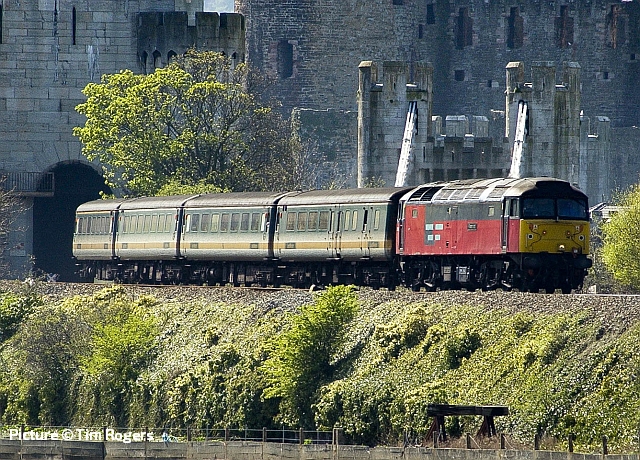
Emerging from the Conwy bridge on the same day, 47 770 Reserved on First North Western 1G11 14:00 Holyhead to Birmingham New Street. Notice the buffer stop which maked the end of siding serving Conwy quay.
The idea of the former BR parcels sector to call itself 'Res' (Rail Express Systems) and use locomotive names beginning with Res led to some very odd names. By this date, Res, along with the three other freight companies, had been absorbed by US-owned combine EWS for some years, but few of its 47s were ever re-painted. Back in 1979 this one, as 47 500, gained 'celebrity' status when painted in green and named Great Western as part of the old GWR's 150th anniversary celebrations.
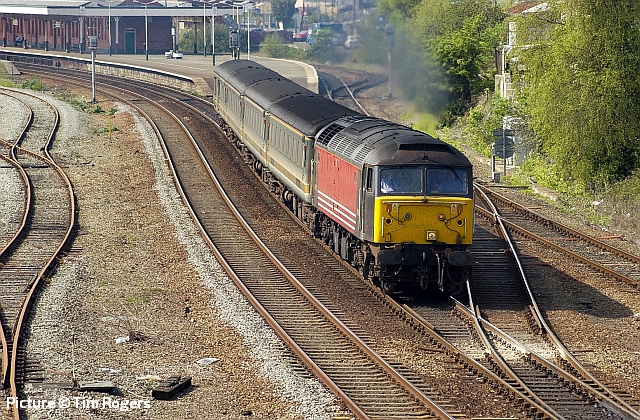
The following day,17 April 2003, the 14.00 Holyhead to Birmingham New Street was entrusted to 47 750, seen departing Llandudno Junction.
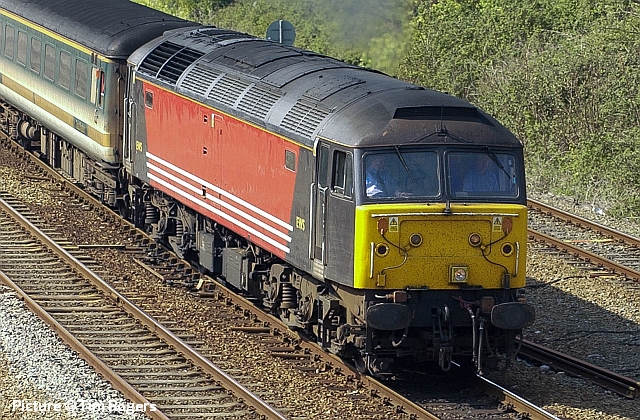
47 750 had been in Res livery as Royal Mail Cheltenham before being hired to Virgin to supplement their fleet and given Virgin livery the old GWR name Atlas which it had worn back in the 60s. By 2003 it was (minus name) with EWS who added the unusual small EWS names and hired it to First North Western.
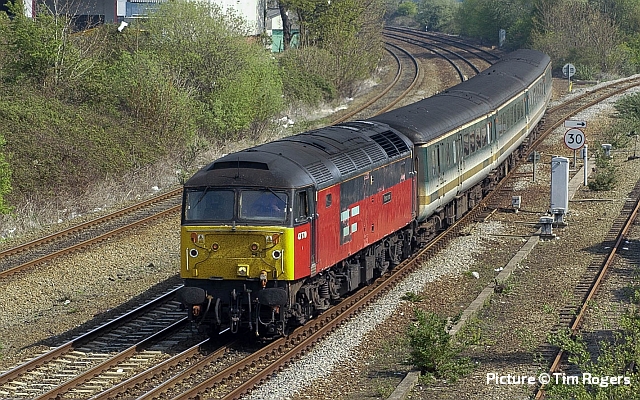
47 770 returned to North Wales on 17 April working the other Birmingham diagram, on 1D71 12.21 Birmingham New Street to Holyhead, seen passing the Conwy Valley branch junction. There was also a daily loco-hauled train pair on the Manchester route. For interest, we have rescued from a dusty corner of archive.org our timetable of loco-hauled and HST workings from the period. We wrote at the time: 'These trains also have something of a historic value, being the only remaining daytime service trains in Britain to be hauled by what was once Britain's largest class of diesel locomotive. Visit while you can, as the current three-locomotive diagram lasts only until mid-May.' On Sundays, for part of the day all three trains could be seen stabled at Holyhead.
A55 - a request
Gary Connor writes: 'I worked for John Laing from 1982 to 1985 on the new stretch of motorway between Colwyn Bay and Llandudno junction. I have viewed your fantastic photos of the new road and new alignment of the existing rail tracks. This has brought back great memories, have you got other photos that could be uploaded to view. I was 16 years old at the time and now 54, I still keep in touch with some of the main supervisors / operatives who worked there one of them being my father. It would be fantastic see more images if they were available.'
Any offers? We'd like to post them here, too.
Looking back: the industrial scene -by Peter Neve
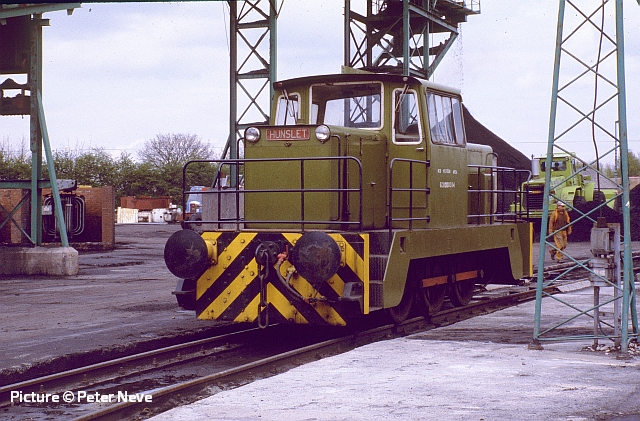
As part of my official duties working for Welsh Water Authority, I had to visit Bersham Colliery from time to time to check that the National Coal Board were adhering to the conditions imposed on them by virtue of an abstraction licence, which permitted them to abstract water from the Glan yr Afon Brook for the purposes of coal washing.
While there I had free rein to wander around the site and took the opportunity to take some photographs of the locomotives working there. 400 HP 0-6-0 Hunslet diesel shunter 63.000.314 (HE 7018/1971) was in operation on 17 May 1983, just a year before the closure of the colliery. Coal can be seen cascading from the grading screen on to a heap of coal just behind the locomotive. I believe this will then be loaded into rail wagons using the large digger in the background.
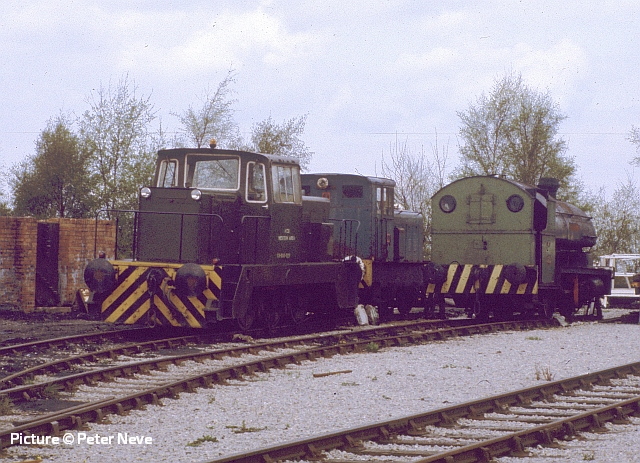
On the same day, redundant steam and diesel locomotives stand idle in a siding at Bersham Colliery. Nearesr the camera is 63.000.329, a 325 HP Hunslet (HE3663/69) next to Ruston 88 HP four-wheel loco 63.000.427 (RH326068/53). The steam locomotive is 63.000.404 Peckett 0-4-0T Hornet (P1935/1937) which is currently on static display at The Ribble Steam Railway and Museum in Preston. Its interesting history is related here.
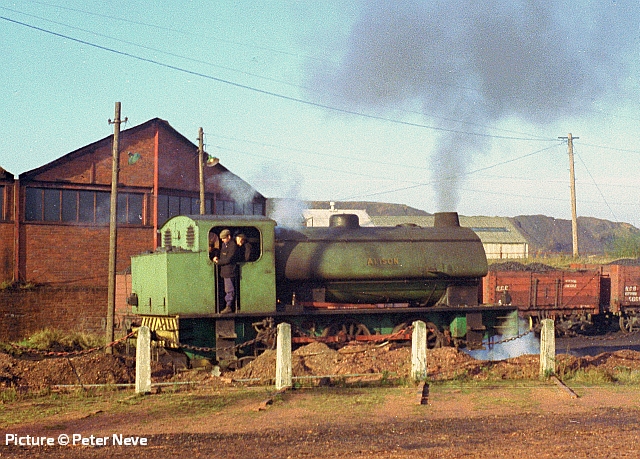
Gresford Colliery In April 1972. Hunslet 'Austerity' 0-6-0T Alison (built in 1944) is in the process of shunting loaded wooden-bodied coal wagons for dispatch to the exchange sidings adjacent to the Chester to Wrexham main line. It has a complicated history which we hope to unravel in the next issue.
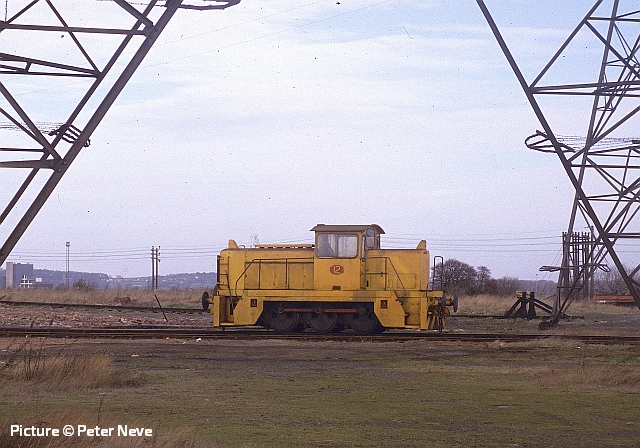
British Steel Corporation at Shotton had its own internal railway system with a fleet of diesel shunters painted in yellow livery. Number 12 was photographed in January 1989 not far from the engine shed, waiting for its next turn of duty. At the time I was required by my employer to regularly visit the steelworks, and as a result I had a security pass to enter the site.
Liverpool 1968 - by George Jones
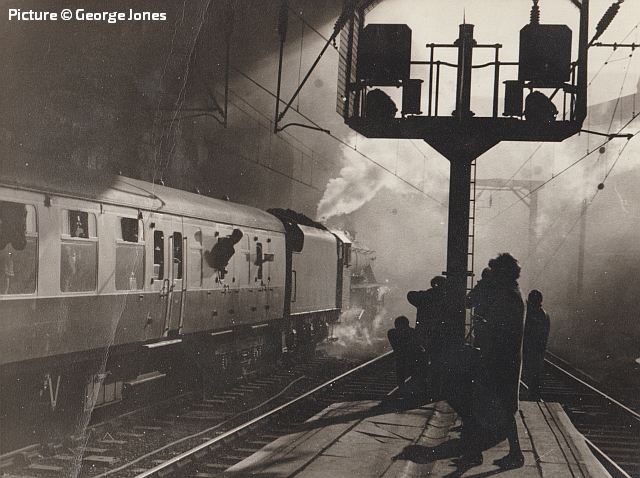
looking back at the past, I unearthed two prints taken for the light and shade as part of a night- school photo exercise. The scene is Lime St on 20 April 1968 with Black 5 45156 Ayrshire Yeomanry about to depart on the RCTS 'Lancastrian No.2' rail tour which took in the northern stretches of the county and ended up back at Liverpool Exchange behind 70013.
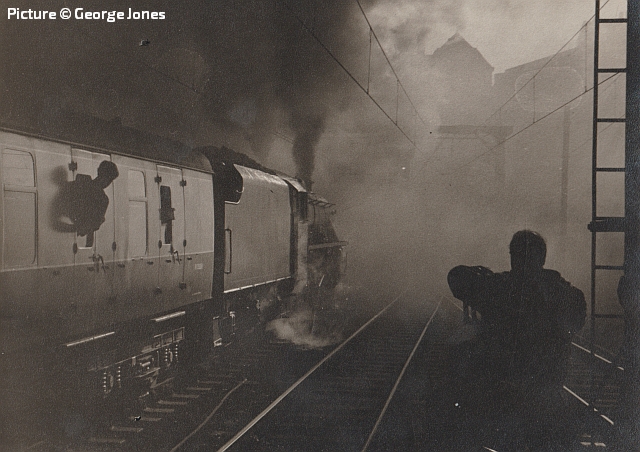
Very environmentally friendly with all the smoke and steam soon to be extinguished. We just took it as normal then.
North Wales Coast, 1978 - by Jim Johnson
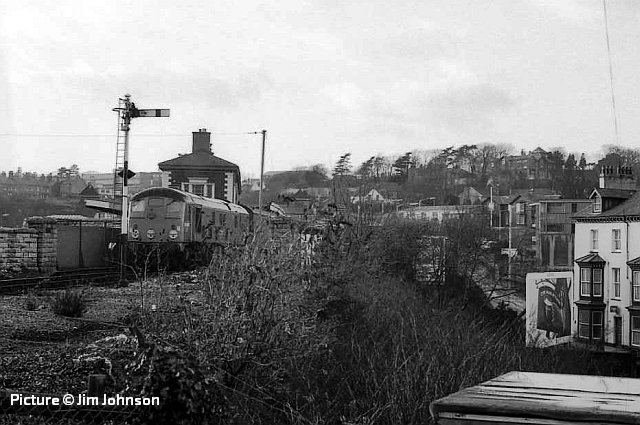
24 063 at Bangor with the 17:55 (SX) parcels to Crewe 2 February 1978.
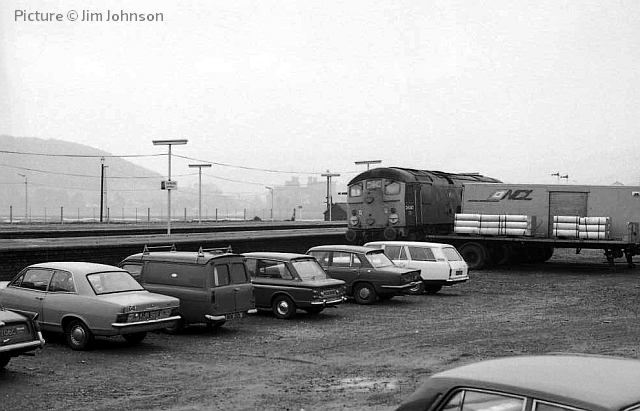
24 047 at Llandudno Junction with the up afternoon Amlwch goods. 21 February 1978.
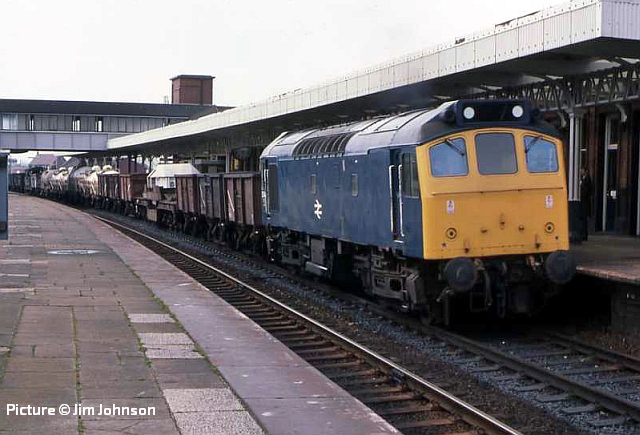
On 18 April 1978, 25 148 leaving Llandudno Junction with the afternoon goods to Warrington Arpley yard including a nuclear flask on one of the modified 'weltrol' wagins which preceded the FNA type, and tank wagons from Amlwch.
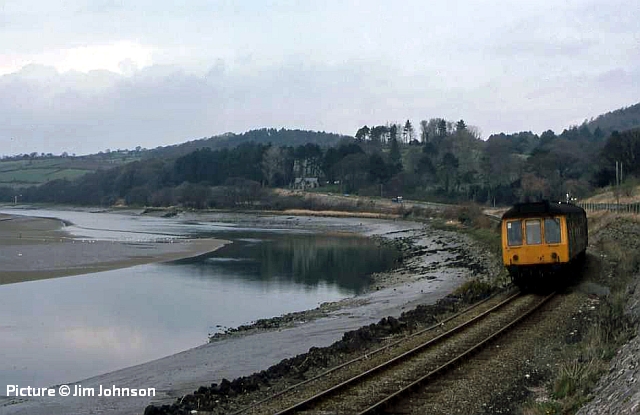
Derby-built Class 108 2-car set M52041+M51926 approaching Tal-y-Cafn, with the 15:27 Llandudno-Blaenau Ffestiniog. 18 April 1978.
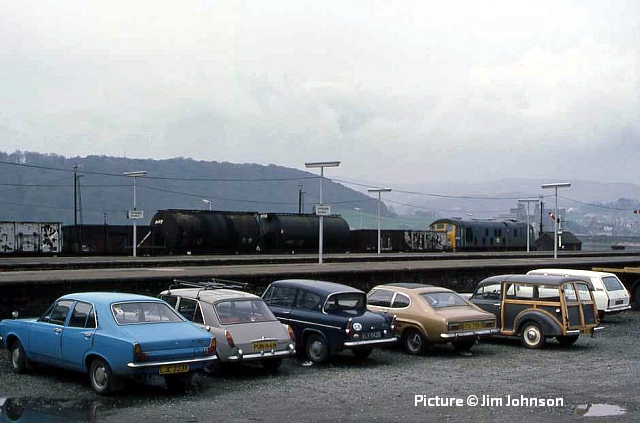
24 023 at The Junction with the down Valley goods, including TTA tanks with fuel for Holyhead depot. 4 May 1978.
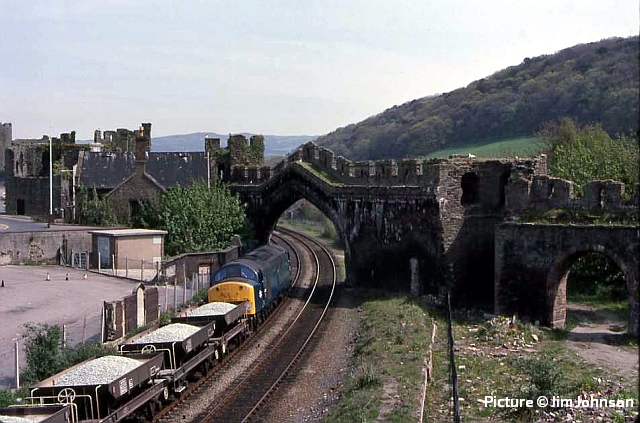
40 120 at Conwy with ballast from Penmaenmawr, 10 May 1978.
Ten locos in four pictures - by Dave Sallery
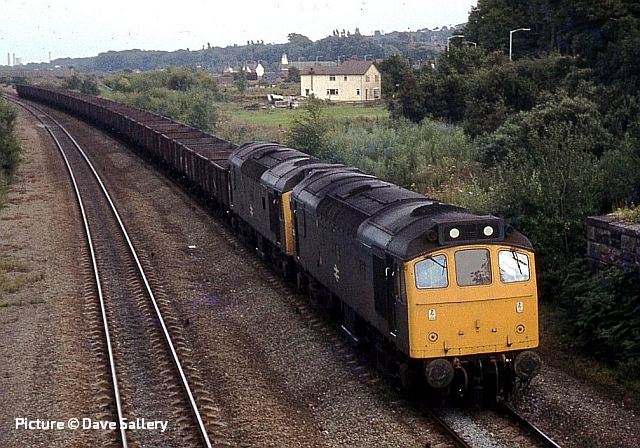
In September 1983, two Class 25 head past Mostyn, going to Point of Ayr colliery to collect coal for ICI Northwich, just before Merry-go-round working took over
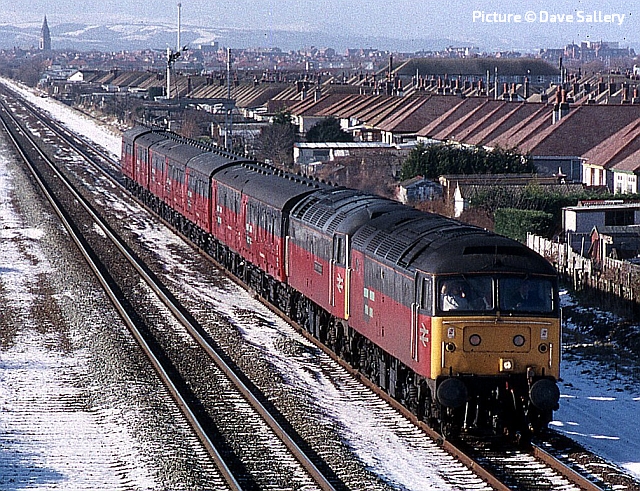
A couple of Res 47s in the snow at Prestatyn, February 1996.
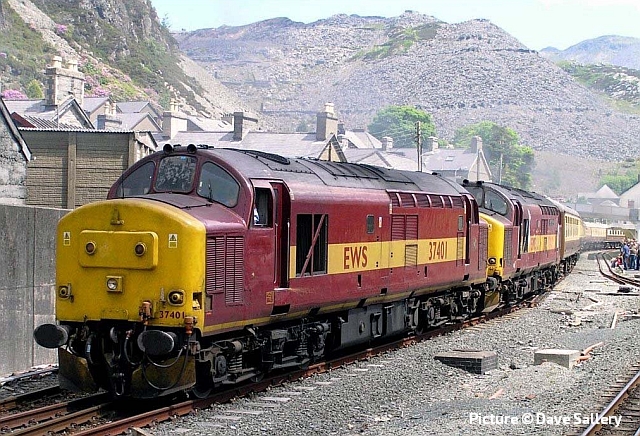
37 401 (without its 'Mary Queen of Scots' nameplate and 37 417 Highland Region, at Blaenau Ffestiniog, 31 May 2008. The locos were working an excursion from Peterborough to Blaenau Ffestiniog, operated by Kingfisher Railtours.
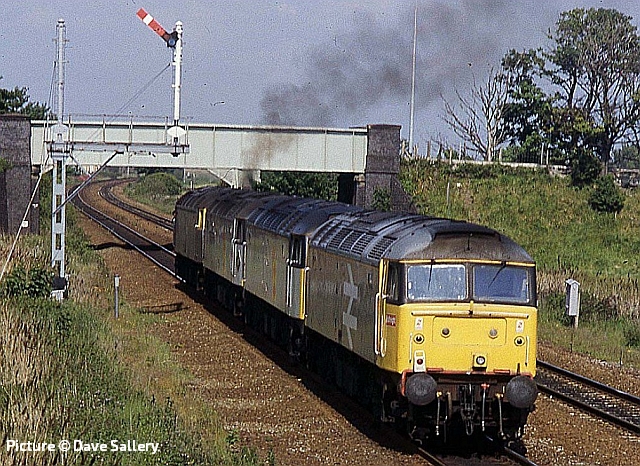
This cavalcade of 47 051, 060, 377 and 186 is on the way from Holyhead to Crewe diesel depot. They are seen restarting from a signal check at Prestatyn, 3 June 1986.
Shrewsbury - Chester events - pictures by Trefor Thompson
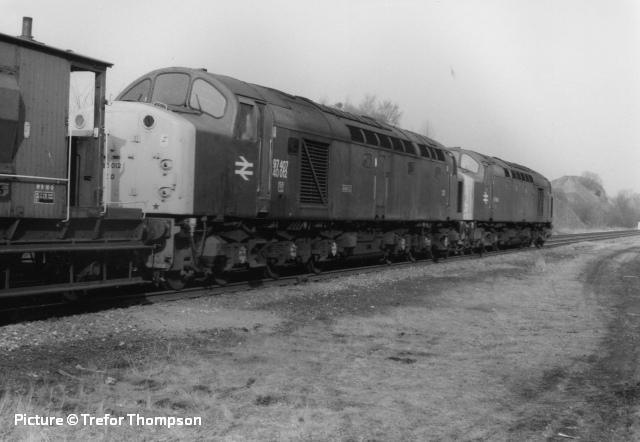
Two photos featuring 97 407/40 012 and 97 408/40 118 on a works train at United Colliery (Gresford) in connection with the singling of the Wrexham to Saltney Junction section on 11 February 1986. The train is stationary on the 'wrong line'.
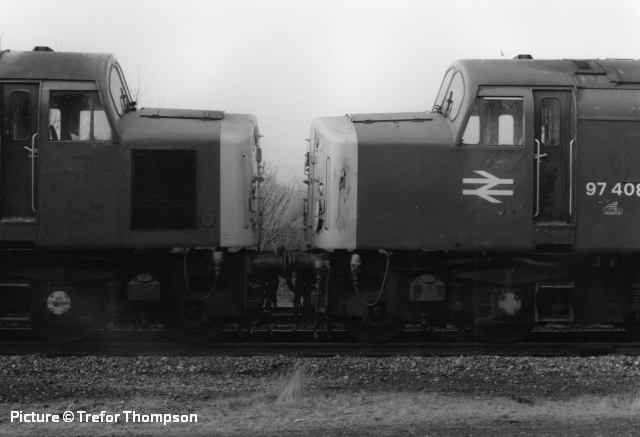
Some redundant Class 40 locos were saved and re-numbered in the 'departmental' series for use in this kind of work.
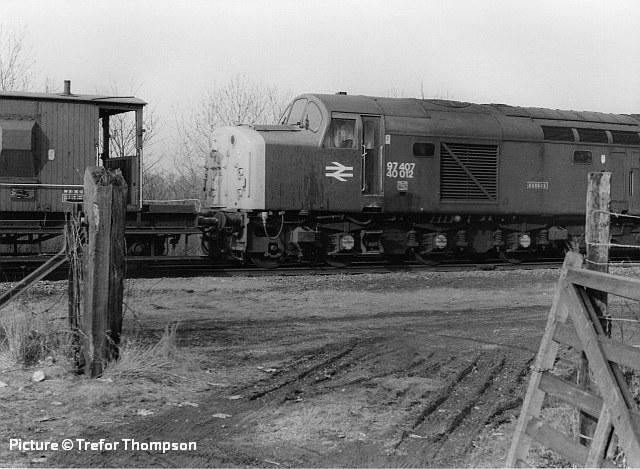
97 407 retained (or regained?) its Class 40 number and a hand-made version of the Aureol name carried in its express passenger days when a number of 40s were named after ocean liners. MV Aureol was a British liner which entered service on the UK - Lagos route for Elder Dempster Lines of Liverpool in 1951.
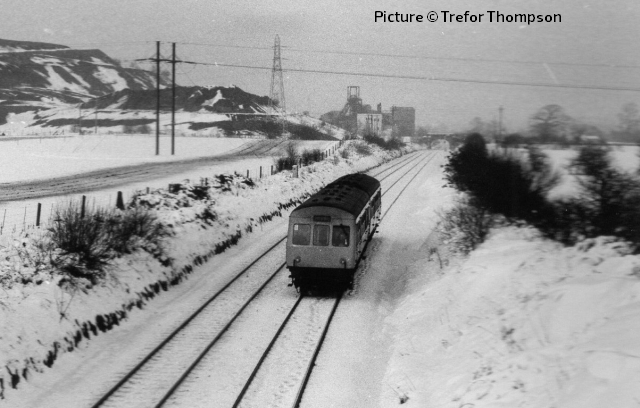
A class 101 DMU on a Chester to Shrewsbury working just south of Bersham, with evidence of the colliery in the background, 13 February 1985.
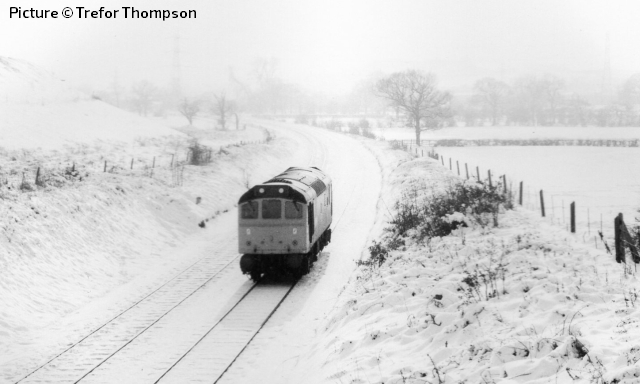
25 300 running light-engine approaching Corkscrew Lane, south of Bersham on the same day.
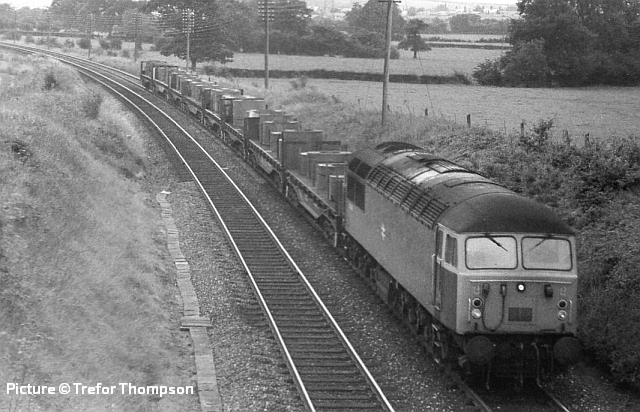
56 040 with Llanwern to Shotton steel coil approaching Corkscrew Lane bridge, just south of Bersham, 5 September 1980.
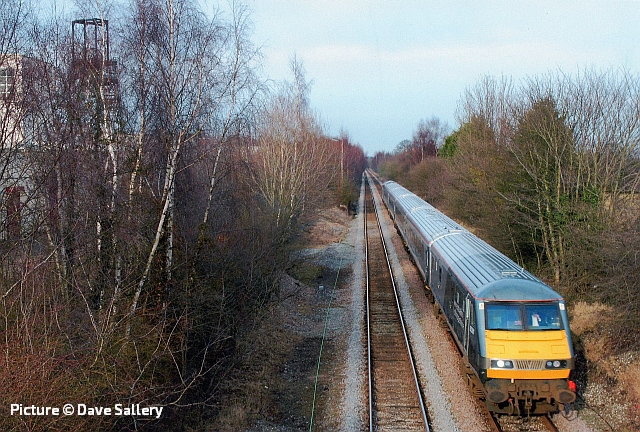
A Wrexham and Shropshire service passing the site of Bersham Colliery, February 2010.
Class 20s on ballast - pictures by Ken Robinson
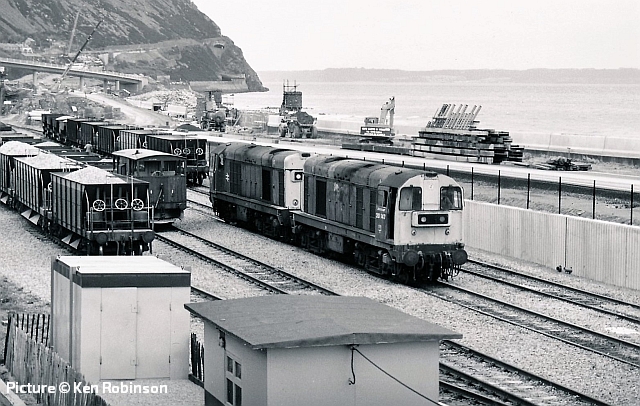
The summer of 1985 saw the introduction of class 20s on some ballast duties out of Penmaenmawr, and they continued up until the early 1990s. The first two photographs show 20 147 and 20160 shunting at the sidings on 20 March 1989.
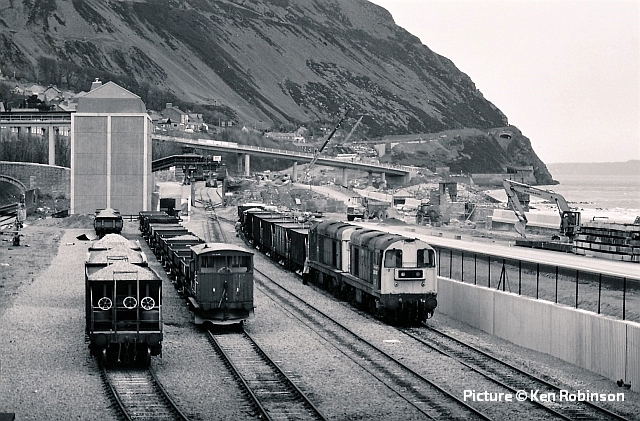
Also of interest is the work on the A55 Expressway in the background.
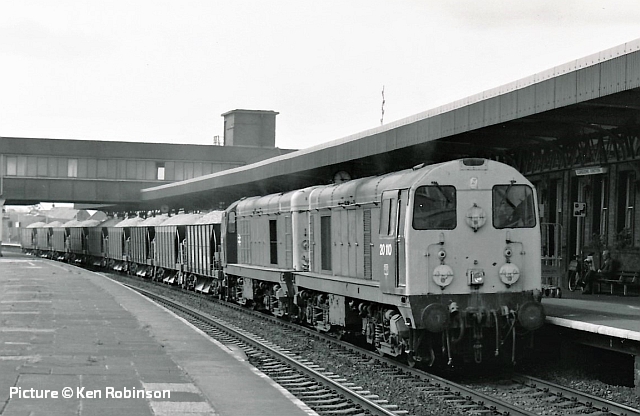
20 110 and 20 035 powering through Llandudno Junction with a ballast working from Penmaenmawr on 22 August 1989.
Early days at the Severn Valley - by Glyn Jones
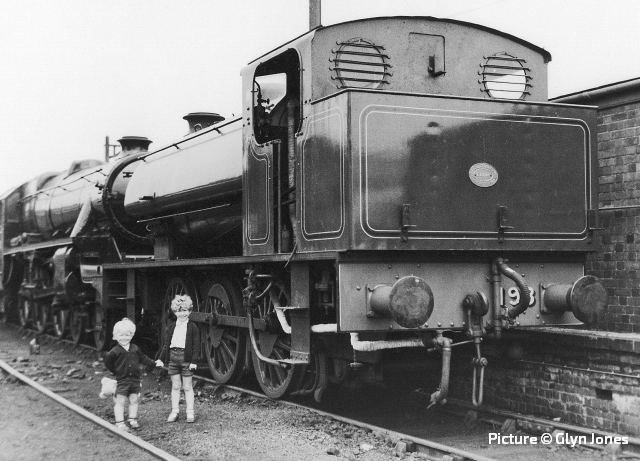
In 1972, on the Severn Valley Railway, you could roam almost wherever you wanted - no 'health and safety'! Two little boys have their photograph taken in front of newly arrived, 1953 built Hunslet industrial 0-6-0ST No.193.
Neither became engine drivers, and now are in their early 50s. The younger one on the left holding his Teddy, eventually graduated from Oxford University and is now a scientist in marine paint technology, and the other boy is currently working 60 hours a week helping to produce much needed anti-bacterial wipes at a factory in Flint.
Let's hope that all of the country's heritage railways survive the present lock-down.
North Wales Coast home page | Archive | Previous Notice Board